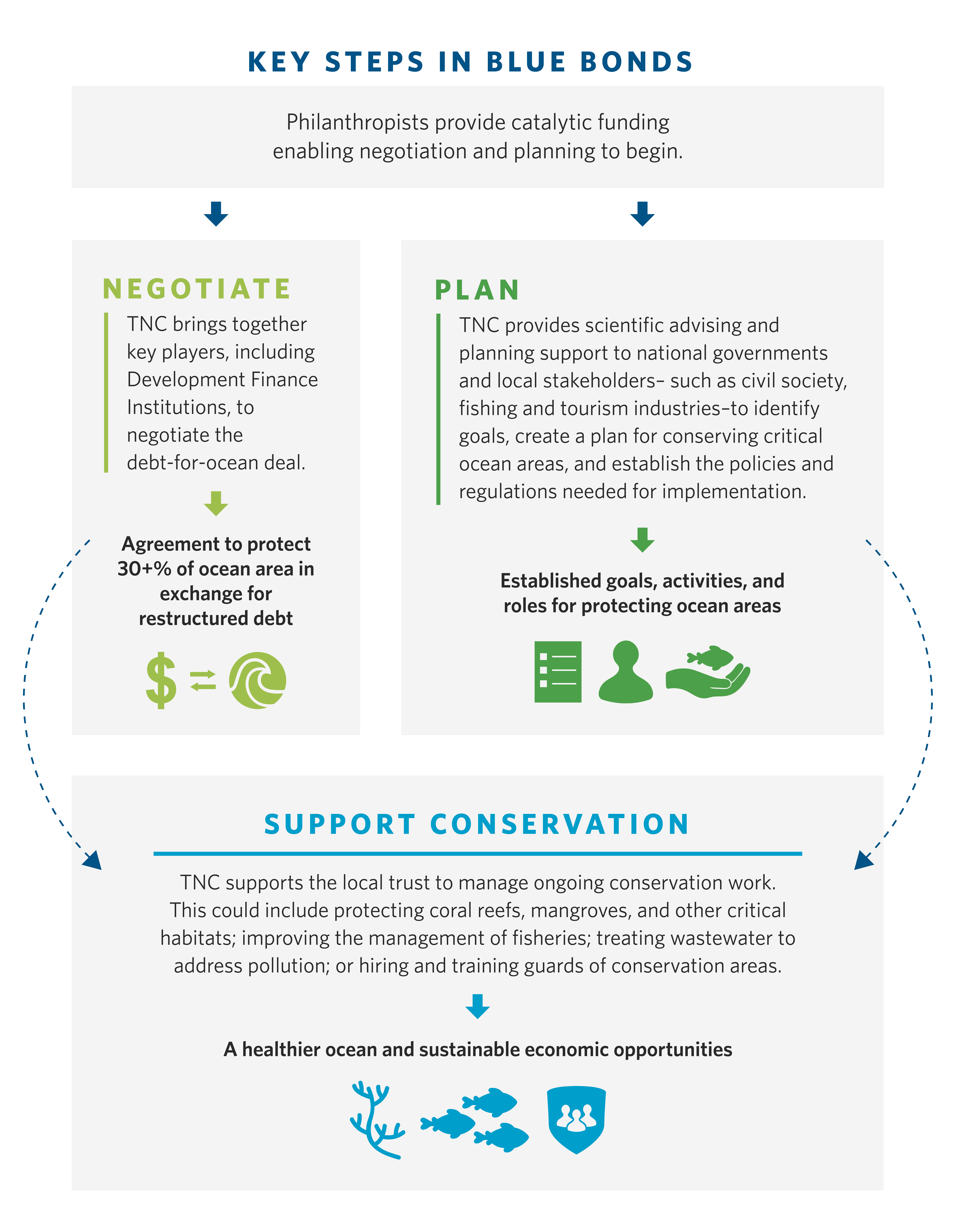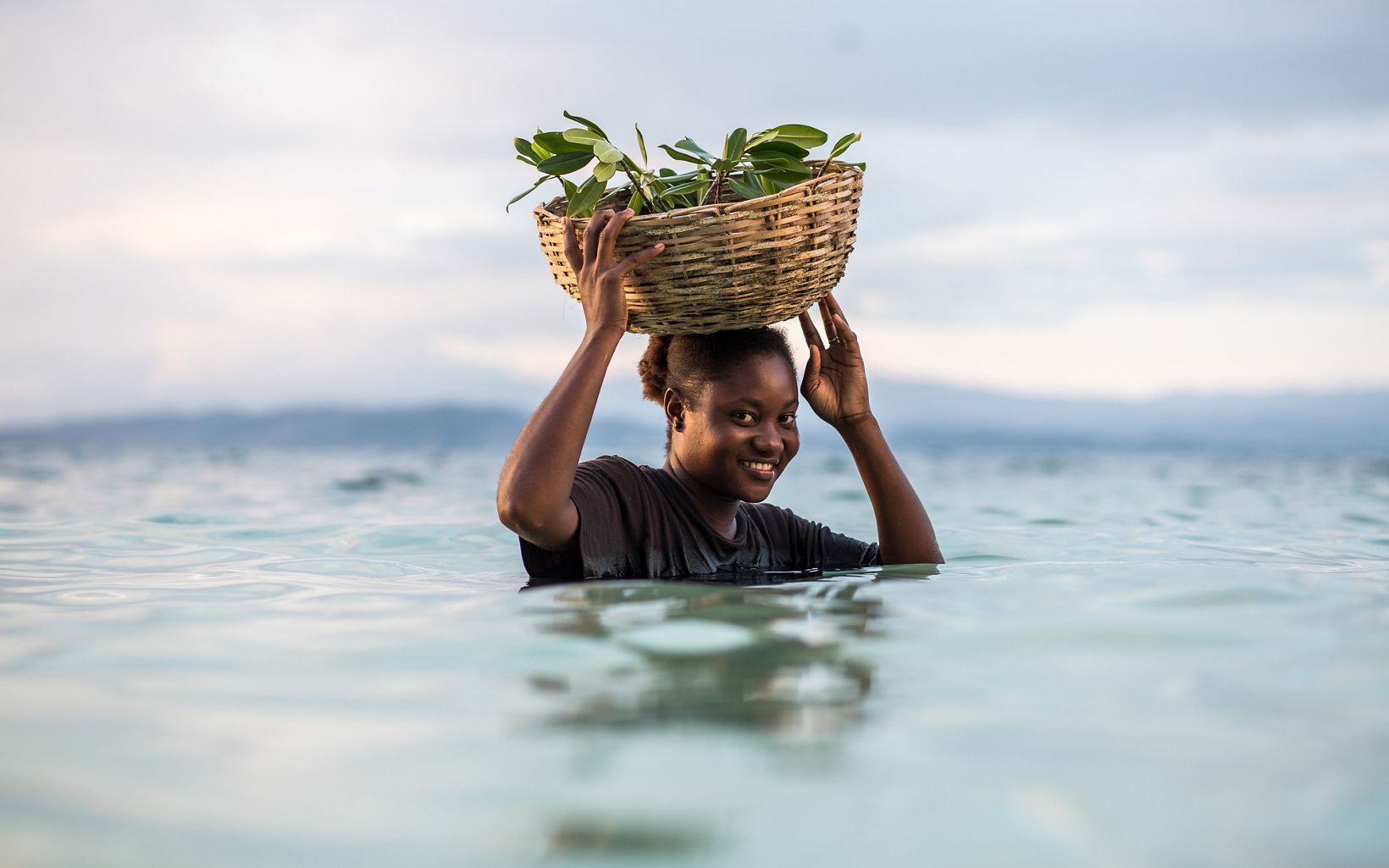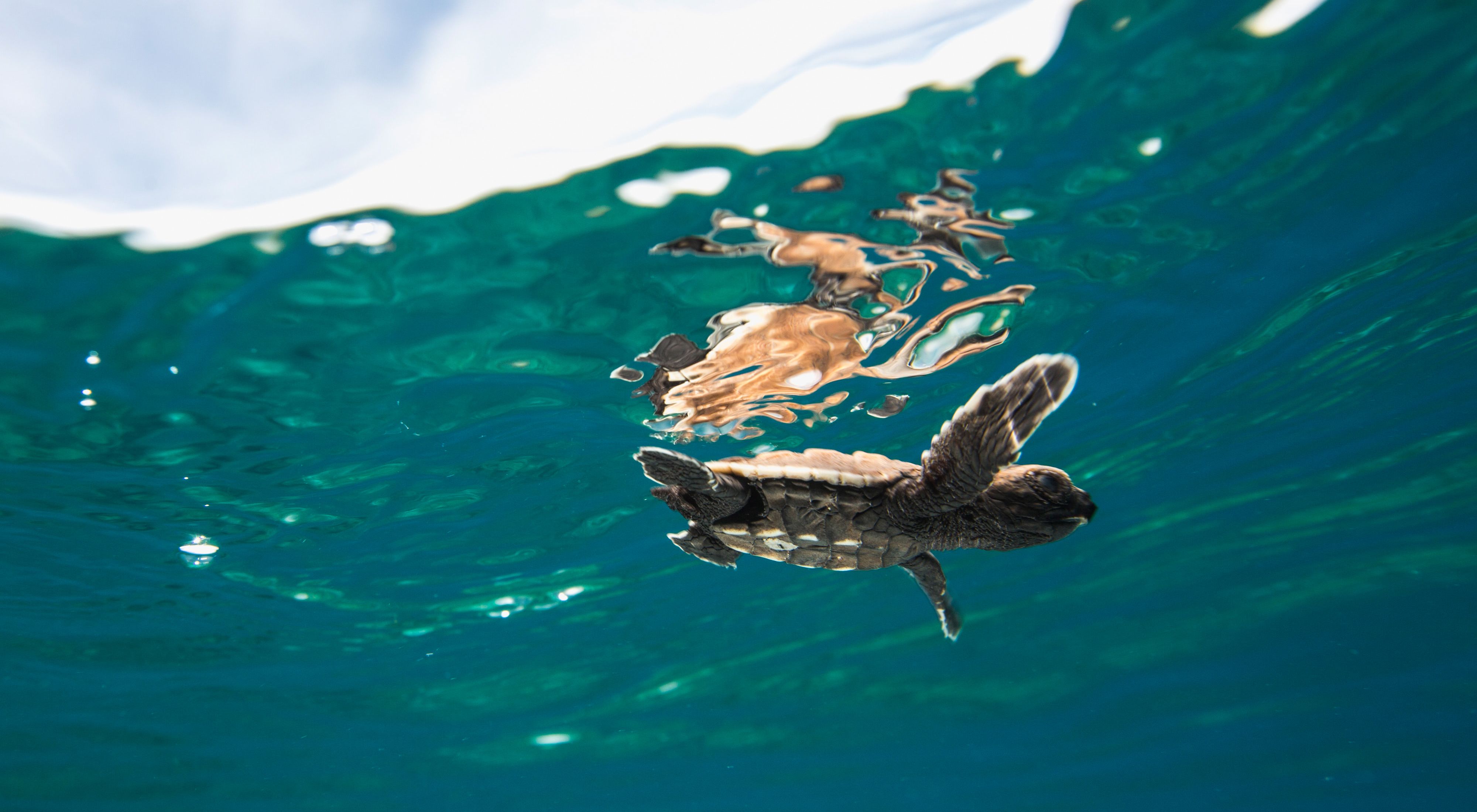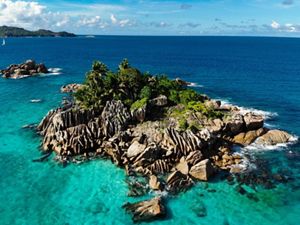Blue Bonds: An Audacious Plan to Save the World’s Ocean
TNC’s Blue Bonds for Conservation model helps governments unlock funding for conservation—and could benefit millions of people in coastal regions.
Key Takeaways
Smarter decisions about how we use and invest in nature for marine conservation and climate change adaptation will make a profound difference for the more than 2 billion people living in coastal regions.
Blue Bonds for Ocean Conservation is one of TNC’s most innovative solutions, supporting island and coastal nations to use debt solutions to create long-term sustainable financing that can help protect 30% of our global ocean while achieving sustainable economic development and adapting to climate change.
In doing so, TNC is leveraging philanthropy to catalyze investments for nature and people, improving more than 4 million square kilometers of ocean—helping governments unlock funds to deliver on their conservation goals and ultimately support the well-being of their communities.
There’s no longer any denying that our global ocean is in a dire state. Overfishing has decimated fish populations; climate change and ocean acidity are pushing coral reefs to the brink of extinction, and the loss of those reefs and other ecosystems has left coastal communities more vulnerable to the impacts of storms and rising sea levels.
Indeed, for many island and coastal nations, these are matters of life and death. As storms increase in intensity, so does their impact. In 2021 alone, natural disasters imposed $270 billion worth of damage to the global economy, disrupting the lives of millions of people worldwide and increasing debt loads for countries as they try to rebuild. COVID’s impact on tourism in coastal nations only exacerbated these challenges.
The Nature Conservancy (TNC) has an audacious plan that can support these countries, build more resilient economies, benefit communities and conserve 15% more of the ocean than what is currently protected.
We’re calling it: Blue Bonds for Ocean Conservation.
Our global insights, straight to your inbox
Get our latest research, perspectives and solutions to today’s sustainability challenges.
Sign UpWhat Are Blue Bonds for Ocean Conservation?
Blue Bonds for Ocean Conservation presents an opportunity for island and coastal nations to reinvest in their natural resources. Here’s how it works:
Debt transactions can come in many shapes and sizes, but typically, TNC works with a country to refinance a portion of its national debt in a way that secures funding for conservation activities, enables valuable returns in planning and protection to improve resilience of economies and communities, and may reduce the country's debt burden. The debt conversion creates new financial flows that support governments in reaching their conservation targets for ocean areas, including for coral reefs, mangroves, and other important habitats, while also engaging in ongoing conservation work such as improving fisheries management and climate change adaptation. To do this, TNC uses credit enhancement and commercial capital, often leading to a reduction in debt outstanding, lower interest rates, and/or longer repayment periods.
The debt conversion leads to savings for the government that in turn are applied to development of a marine spatial plan and a fund to support local conservation activities. At the government’s request, TNC lends its scientific, technical, and planning expertise to design participatory and transparent processes with active stakeholder engagement to expand marine protections and identify areas for sustainable economic activity.
How Blue Bonds Works
-
1. Conservation Commitments
Governments are committed to protecting approximately 30% of their ocean areas in alignment with global conservation goals.
-
2. Marine Spatial Planning
Using our scientific expertise, TNC works with stakeholders to identify activities that combine conservation and sustainable economic opportunities, such as restoring coral reefs for tourism and improving fisheries management.
-
3. Unlocking Sustainable Finance
Working with partners, TNC helps refinance countries’ national debt, often purchasing the debt at a discount and refinancing it with better interest rates and/or longer repayment terms.

Is the Blue Bonds Model Effective?
The idea might be audacious, but we’ve seen that it can work. Cabo Pulmo National Park in Mexico's Baja Peninsula demonstrates what can be achieved when we give ocean environments an opportunity to heal: 10 years after the park’s establishment as a marine protected area; it has reversed the toll of decades of overfishing and increased fish stocks by over 400%.
 The Blue Bonds debt conversion model has a proven track record of producing conservation outcomes beginning with a pilot in the Republic of Seychelles. In 2016, Seychelles worked with TNC to refinance part of its national debt, generating up to $430,000 per year for marine conservation and climate change adaptation. As of 2020, the Seychelles government has protected 86 million acres of ocean—exceeding their goal to protect 30% of Seychelles’ Exclusive Economic Zone and Territorial Sea by 2020. In 2021, we expanded the initiative with a successful Blue Bonds transaction in Belize, and in 2022, we announced a project in Barbados. And the success of this approach has led TNC to begin looking at how this work can be expanded to also protect freshwater and terrestrial systems in line with global protection commitments.
The Blue Bonds debt conversion model has a proven track record of producing conservation outcomes beginning with a pilot in the Republic of Seychelles. In 2016, Seychelles worked with TNC to refinance part of its national debt, generating up to $430,000 per year for marine conservation and climate change adaptation. As of 2020, the Seychelles government has protected 86 million acres of ocean—exceeding their goal to protect 30% of Seychelles’ Exclusive Economic Zone and Territorial Sea by 2020. In 2021, we expanded the initiative with a successful Blue Bonds transaction in Belize, and in 2022, we announced a project in Barbados. And the success of this approach has led TNC to begin looking at how this work can be expanded to also protect freshwater and terrestrial systems in line with global protection commitments.


Scaling the Opportunity
Blue Bonds benefit people and nature: the national governments get significant financial savings to invest in natural resources that support their economies; local communities, in turn, see their livelihoods and cultural heritage protected; and the donors who provided the original seed funding realize incredible leverage on their philanthropic investment—a multiplier of up to 40 times.
TNC is working with island and coastal countries in the Caribbean, Africa, Latin America, the Pacific Islands and the West Indian Ocean to improve marine area management and create new marine protected areas.
The governments’ new marine protections will provide improved management and conservation for 4 million square kilometers of ocean—a 15% increase in the amount of ocean that currently exists. The oceans goal includes approximately half in high protection status to protect marine biodiversity and ecosystem function, and half in biodiversity and sustainable use zones to ensure biodiversity and sustainable livelihoods.
These territories are home to 13% of the world’s coral reefs, and customized marine protection plans would ensure the reefs are protected and restored. Those healthy reefs in turn provide habitat for fish, sea turtles and other marine species; they can also “seed” surrounding reefs by spreading coral larvae through ocean currents. And protecting these areas will ultimately benefit the more than 2.4 billion people living in coastal regions through more sustainable economies and stronger resilience to climate change.

Seychelles Achieves 30 Percent Marine Conservation
On March 26, 2020, Seychelles announced the final details of its Marine Protection Areas to reach its goal to protect 30 percent of its ocean.
A Pivotal Moment for Ocean Conservation
A 15% increase in conserved ocean already represents an ambitious plan—but the potential scale is even greater.
The size of this opportunity is matched by the urgency of our current moment; however, we’re at a pivotal moment where governments’ ocean conservation goals and other interventions can have a significant impact on the state of the world’s fisheries, ocean biodiversity and coastal resilience. But the window of opportunity before ocean degradation becomes irreversible—especially in coastal areas—is growing ever smaller.










Global Insights
Check out our latest thinking and real-world solutions to some of the most complex challenges facing people and the planet today.



